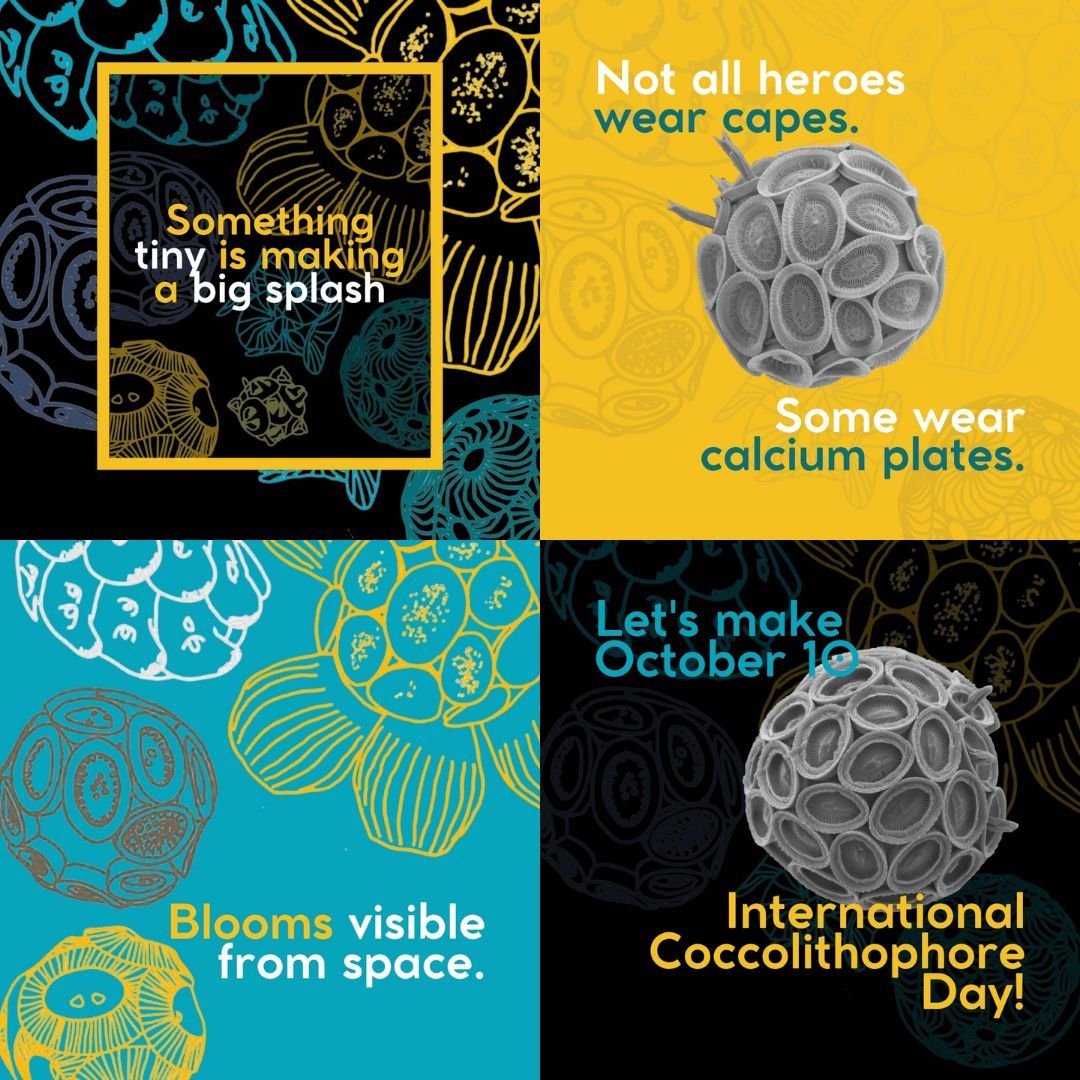Architects invisible to the naked eye, but with a titanic impact: scientists propose October 10 as International Coccolithophore Day
An international campaign led by teams from Croatia, the United Kingdom, Norway, and Portugal, in cooperation with the International Nanoplankton Association (INA), aims to celebrate the role of calcifying microalgae in helping to regulate the climate and tell the story of Earth. 
Smaller than a speck of dust, coccolithophores are single-celled marine microalgae that produce delicate calcium carbonate plates called coccoliths. This calcareous exoskeleton not only gives them stunning shapes, but also plays a decisive role in global climate balance.
The importance of these organisms lies in the fact that they capture carbon dioxide dissolved in the ocean, help produce oxygen, and when they die, their coccoliths slowly sink to the bottom of the sea, forming limestone sediments—the same material that chalk is made of—which record millions of years of climate history.
“Coccolithophores are unique because they act like tiny carbon factories,” explains Alex Poulton, a researcher at the Lyell Centre (UK). “They transform CO₂ into mineral structures that accumulate in marine sediments and store the memory of Earth's climate over hundreds of millions of years.”
From the microscope to the global climate
Every year, coccolithophores produce more than 1.5 billion tons of calcium carbonate, helping to store carbon on the ocean floor and sustain marine food chains. But their balance is at risk. Climate change is worsening, sea water temperatures are rising, the ocean is becoming more acidic, and the availability of nutrients is decreasing, conditions that affect the survival of these organisms and, consequently, the stability of the ecosystems and biogeochemical cycles they sustain.
To recognize the importance of this group of microalgae and raise awareness of the changes that threaten them, five European research institutions have launched a science communication campaign to establish International Coccolithophore Day, to be celebrated on October 10.
The initiative is led by the Ruđer Bošković Institute (Croatia), The Lyell Centre at Heriot-Watt University (United Kingdom), NORCE Norwegian Research Centre (Norway), and MARE – Center for Marine and Environmental Sciences, Faculty of Sciences, University of Lisbon, in cooperation with the International Nanoplankton Association (INA).
“São os arquitetos invisíveis do oceano”, afirma Jelena Godrijan, do Ruđer Bošković Institute (Croácia). “Cada placa microscópica que produzem torna-se parte de um arquivo geológico que nos conta a história do planeta.”
Portugal at the forefront
In Portugal, researcher Catarina Guerreiro (MARE/ARNET – Ciências ULisboa and collaborator at Instituto Dom Luiz (IDL-RG2)) has led several studies that help to understand how ocean currents and desert dust deposition influence the production and distribution of different species of coccolithophores, and their role in regulating marine carbon.
As part of the CHASE project, funded by the Foundation for Science and Technology (FCT-CEECIND) and the result of a partnership between MARE/ARNET and IDL-RG2, Catarina and her team of national and international collaborators analyze samples of seawater and atmospheric dust collected during various oceanographic expeditions in the Atlantic Ocean, combining satellite data, biogeochemical observations, sediment records, and laboratory experiments to understand how dust from continental deserts—with a focus on the Sahara Desert—acts as a natural fertilizer for coccolithophores.
“We are trying to understand how seemingly distant processes, such as dust storms in the Sahara, can affect coccolithophore productivity in the Atlantic and, consequently, the global marine carbon balance,” explains Catarina Guerreiro.
The scientist also coordinates Portugal's participation in the OAEPIIP - Ocean Alkalinity Enhancement Pelagic Impact Intercomparison Project, a project involving 19 countries that assesses the potential biogeochemical impacts of increased ocean alkalinity. This emerging approach to removing atmospheric carbon dioxide (Carbon Dioxide Removal - CDR) has been proposed as a possible solution to mitigate climate change by enhancing the ocean's capacity to absorb carbon dioxide without compromising marine life.
A day to celebrate the invisible
The creation of an international day dedicated to coccolithophores is a way of bringing science closer to society and giving a voice to a group of organisms that are as discreet as they are essential. It is a call for global action, an invitation to rethink the way we look at the ocean and the organisms that sustain it.
As Sarah Cryer, a researcher with the CHALKY project and the OceanCANDY team, points out, “we often talk about whales, coral reefs, or polar regions, but we forget that microscopic life plays an essential role in the planet's balance. Coccolithophores show us that the smallest organisms can have the greatest impact.”
Behind this initiative is an international research network that brings together several teams, including Catarina Guerreiro, who is working to understand how these organisms influence the carbon cycle and the planet's climate.
“The aim of the campaign is to raise awareness among the general public, but also among the scientific community, of the cross-cutting importance that this group of tiny organisms has in processes that affect our planet on a global scale,” said the Portuguese researcher.
To acess the press release, click HERE
Illustrations by Rosie Sheward.
Text by Catarina Guerreiro and Vera Sequeira
